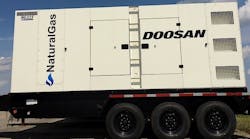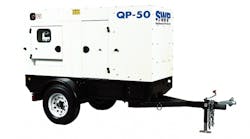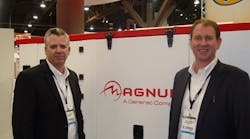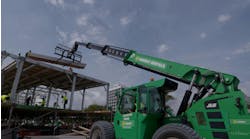Product of the Week - Doosan NG225 and NG295 paralleling natural gas generators
Doosan Portable Power has introduced paralleling capabilities for the NG225 and NG295 models of its popular natural gas generator product line.
Paralleling natural gas generators are designed for use in oil and gas exploration, site preparation and water well drilling where remote locations, emissions regulations and 24-hour production schedules pose challenges for operators. Paralleling multiple natural gas units together is a means for avoiding downtime while still achieving acceptable emissions levels by consuming wellhead natural gas as a fuel source.
Paralleling generators share the load, and therefore should one machine shut down or need to be taken offline for scheduled maintenance, the other unit is designed to seamlessly takes on the full load, preventing any lost production time.
Doosan Portable Power natural gas generators utilize a factory-installed paralleling solution that is built into the machine design. The units include a new control panel and electronically controlled circuit breaker that allows the machines to communicate, bringing the units into synchronization without risk of system failure or machine damage that can occur when paralleling conditions are not precisely met.
In addition to a Doosan-installed paralleling solution, the paralleling NG225 and NG295 also include a number of unique features, such as the patent-pending Onboard Scrubber System (OBSS) that improves machine performance by removing excess dirt and water from wellhead gas.
The OBSS includes a heated drain valve to prevent water removed from the gas from freezing in the hose — an event that could disrupt the flow of natural gas and possibly cause the machine to shut down. The OBSS is fully enclosed to protect against harsh weather, possible damage during shipping and vibration that would occur if attached to the drawbar.
Doosan Portable Power natural gas generators are equipped with an automatic dual-fuel switch, allowing the generator to operate on natural gas, as well as propane from an external tank. This is designed to ensure continuous generator operation in the event that wellhead gas flow is interrupted or unavailable.
Operators can select 50 Hz or 60 Hz, with the simple flip of a switch, and choose between 480 volts and 600 volts alternator output.








